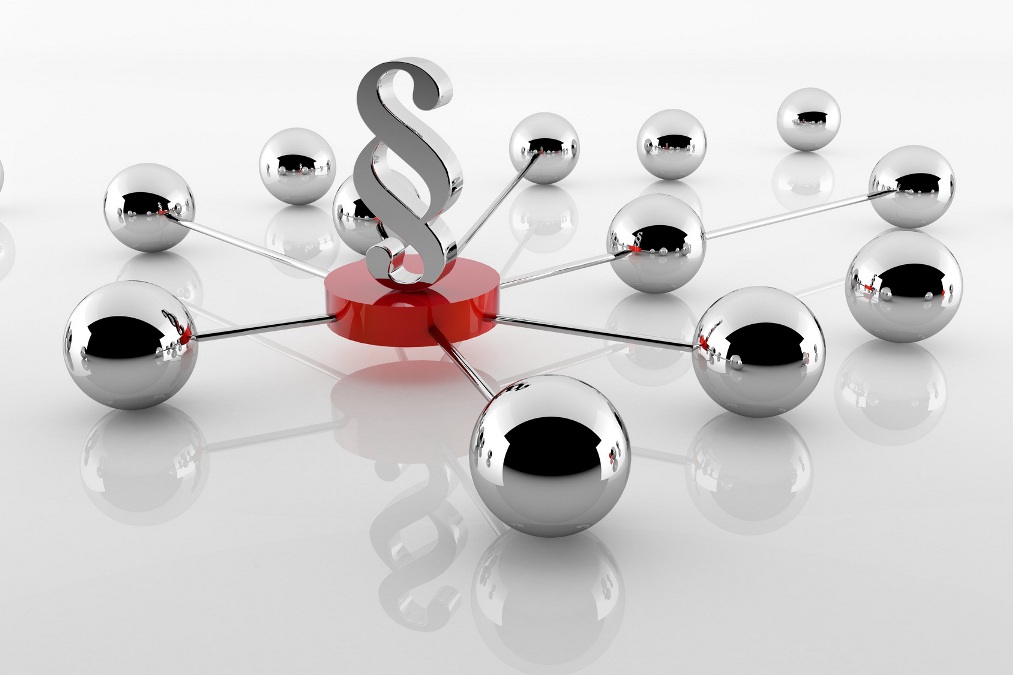In a like manner, tertiary consumers eat secondary consumers and quaternary consumers eat tertiary consumers. - Definition, Factors & Examples, Psychological Research & Experimental Design, All Teacher Certification Test Prep Courses, Pamela Pratt-Zavadil, Lisa Roundy, Amanda Robb, Food Chain Producers, Consumers, and Decomposers, OAE - Integrated Science: Scientific Thought & Inquiry, OAE - Integrated Science: Principles of Scientific Research, OAE - Integrated Science: Research Methods & Equipment, OAE - Integrated Science: Historical Developments & Theories, OAE - Integrated Science: Science & Society, OAE - Integrated Science: States of Matter & Phase Changes, OAE - Integrated Science: Chemical Properties & Bonds, OAE - Integrated Science: Chemical Changes in Matter, OAE - Integrated Science: Work, Power & Energy, OAE - Integrated Science: Waves, Light & Sound, OAE - Integrated Science: Cell Structure & Function, OAE - Integrated Science: Biomolecules & Enzymes, OAE - Integrated Science: Organism Classification & Processes, OAE - Integrated Science: Human Reproduction & Growth, OAE - Integrated Science: Human Body Systems, The Environment, Levels of Ecology and Ecosystems, Producers, Consumers & Decomposers in Ecosystems, Abiotic Factors of an Ecosystem: Definition & Examples, Ecosystems, Habitats and Ecological Niches, Food Chains, Trophic Levels and Energy Flow in an Ecosystem, Interspecific Competition, Competitive Exclusion & Niche Differentiation, Predator/Prey Interactions, Camouflage, Mimicry & Warning Coloration, Symbiotic Relationships: Mutualism, Commensalism & Parasitism, Populations: Density, Survivorship and Life Histories, Dispersal, Colonization, and Island Biogeography, Ecological Succession: From Pioneer to Climax Communities, OAE - Integrated Science: Chemical Cycling & Human Activities, OAE - Integrated Science: Physical Geology & Earth's History, OAE - Integrated Science: Rocks, Minerals & Topography, OAE - Integrated Science: The Hydrosphere, OAE - Integrated Science: Atmosphere & Climate, OAE - Integrated Science: Evolution of the Solar System & Universe, OAE - Integrated Science: The Solar System, Ohio Assessments for Educators Integrated Science Flashcards, Science 102: Principles of Physical Science, CAHSEE English Exam: Test Prep & Study Guide, High School Physics: Homework Help Resource, What is a Decomposer? All organisms need to take in energy to live. There are three main groups to consider when looking at the circle of life in an ecosystem. She is also certified in secondary special education, biology, and physics in Massachusetts. There are three main classifications such as producers, consumers, and decomposers. (An In-Depth Explanation). B/2(&?Hp w|\#A]sj Like all primates, we are consumers, not decomposers or producers. 2. Each organism has a purpose. They must find food and eat it to obtain energy. Animals that eat only plants are called herbivores (or primary consumers). Some of our partners may process your data as a part of their legitimate business interest without asking for consent. I feel like its a lifeline. Every person, plant, or animal needs to take in energy to live and grow. The wasp, a secondary consumer, and carnivore get its energy when it eats the bee. (Read This First! Their chlorophyll requires them to take in red UV rays which are the first to be absorbed by the ocean, meaning that they are only present in the shallowest waters, Range from finely branched filaments to thin sheets, Sea lettuce (Ulva) and sponge weed (Codium), Most abundant and widespread of macroscopic algae, Highest intertidal levels to outer edge of the inner sublittoral zone, can go as deep as 880 ft, Green to dark purple/black in shallower well lit areas OR brown to pinkish red in deeper darker zones, Warm and cold waters; smaller in warm waters, They absorb the blue and green rays of the solar radiation spectrum. Fungi and bacteria are the most common decomposers. In addition to the antelope mentioned earlier, examples of primary consumers on the African savanna would be a wild boar or a giraffe. Clownfish are an omnivorous species which means they fit the classification of both a primary consumer and a secondary consumer. This food manufacturing process is carried out by photosynthesis using the suns energy. These are the plant eaters, or herbivores. So, to conclude, fish are not producers nor are they decomposers. How do you use sycamore in a sentence? Being a producer in a food chain, they not only manufacture their own food with the help of sunlight, but organisms also depend on this tree for their own food. As, in this article, youll find the answer to this question and after youve read the answer to the main question then Ill also cover the answers to a few more closely related questions to extend your knowledge even more. copyright 2003-2023 Study.com. On the African savanna, examples of producers would be any of the plants that grow there. Vultures and raccoons are scavengers because they consume the soft tissues of lifeless animals. Wouter is a passionate animal-related blogger who enjoys researching and writing about animal-related topics. Every person, plant, or animal needs to take in energy to live and grow. This non-linear set of interactions which shows the complex flow of energy in nature is more easily visualized in the following diagram. This is because like other producers, such as ferns, bushes, and grasses, oak trees make their own food through photosynthesis and are a source of food for other creatures such as birds and mammals known as consumers. They are important because they are the basis of life in all food chains in the ecosystem. Biome Lesson for Kids: Definition & Facts, Matter & Energy Transfer in Ecosystems: Lesson for Kids, Animal Niches vs. Habitats vs. Ecosystems | Overview, Differences & Examples, Using Fossil Evidence to Evaluate Changes in Environment & Life Conditions, What is Ecological Succession? stream In an ecosystem, you will find producers, consumers, and decomposers that are all interconnected and depend on each other to survive.Interested in incorporat. Of course, some people will become vegetarians or vegans, meaning they restrict their diet to plant-based foods. The grass grows and is eaten by an antelope. These are decomposers that will break down the nutrients and return them to the soil so that grass can grow again. Your creative piece will imagine the consequences of removing a trophic level for both the ecosystem and human life. (a) What is the critical crack length required to cause fracture? Using photosynthesis, they produce their own food using light energy from the sun, water from the soil, and carbon dioxide from the soil. When a primary consumer eats a producer (for example, when a cow eats grass), part of the energy synthesized by the producer is passed on to the consumer. Northern red oaks are used for many commercial products. You might be wondering if a frog is a producer, a consumer, or a decomposer. As a member, you'll also get unlimited access to over 88,000 (Quick Answers), What Size Pot for Snake Plant? These decomposers speed up the decaying process that releases mineral salts back into the food chain for absorption by plants as . Check out the video below if you want to see how a polar bear hunts a seal. Producers, Consumers and Decomposers teacher answer sheet 4 . % When humans eat other predators, such as tuna, various shark species, hogs, and so on, we are eating secondary consumers. Carnivores are animals are insects that eat only other animals, and omnivores are animals or insects that eat both plants and animals. An example of data being processed may be a unique identifier stored in a cookie. We, humans, are a common example of omnivorous animals, along with pigs, brown bears, and crows. Biomass, or total available usable energy, is highest within organisms with a lower trophic rank (that is, those that are lower on the food chain), and it is lowest in organisms with higher trophic ranks (that is, those at the top of the food chain). Herbivores - Animals that only eat plants (producers). As, in this article, Ill share the answer to this question and after Do Fish Kiss? Humans are changing natural . How Introduced and Invasive Species Alter Ecological Balance. They feed on any remaining organic matter left by other decomposers. endstream endobj startxref This need for nutrition and nourishment which consumers fulfill by eating different parts of the tree is what makes oak trees vital for deciduous forests. Thank you for subscribing to our blog! Try refreshing the page, or contact customer support. Producers make their own food. (An In-Depth Explanation). Are Cyanobacteria producers, consumers, or decomposers? Instead, they access valuable nutrients by eating animals that eat producers. Any animal that eats a primary consumer is a secondary consumer, even if they also eat secondary or tertiary consumers. They can, however, also consume primary, secondary, and tertiary consumers but this depends on which animal youre talking about. Ever wondered if fish are producers, consumers, or decomposers? Discover how producers, consumers, and decomposers relate to one another through the food chain. Weather vs. To make sure your piece has all of the requirements, check out the criteria for success below. When the coyote dies, it is eaten and decomposed by worms and bacteria, which are decomposers, returning its nutrients into the food chain to be used again. Species like, for example, pacus, silver dollars, Farlowella fish, and mollies eat plant-based foods but do eat other creatures in the wild as well which makes them both primary and secondary consumers. include animals, such as lions. Split your team in two, each group to analyze one of the following reaction sequences by a include plants such as wheat. Finally, the hawk will die someday and possibly be eaten by a buzzard, earthworms, and bacteria. The hawk, a fifth-level consumer, and carnivore will get its energy by eating the snake. All animals are consumers. Get unlimited access to over 88,000 lessons. | 24 Is algae a producer consumer or decomposer? - Short-Fact Producers, such as a tree, make their own food and begin this cycle. As, in this article, Ill share the answer to this question and after Do Fish Kiss? Within the food chain, fish are consumers. The rabbit is then eaten by a coyote, also a consumer. However, clownfish will sometimes get nutrients directly from plants. OAE - Integrated Science: Ecological Systems, What is Biotic? In this lesson, students will imagine a situation in which one of the three trophic levels, producers, consumers or decomposers, goes extinct. If you would like to change your settings or withdraw consent at any time, the link to do so is in our privacy policy accessible from our home page.. Because they absorb blue and green light which are the rays that are most abundant in the ocean and penetrate the deepest because they are absorbed by the ocean last (red absorbed first). The groups are producers, consumers, and decomposers. For example, students might imagine a world without decomposers. (An In-Depth Explanation), link to Do Fish Kiss? For instance, mirror dory fish sometimes feed on jack mackerel (secondary consumers) which, in turn, feed on larvae, crustaceans, and shrimp (primary consumers). They store these sugars in their cells to fuel internal reactions. Chapter 17 assignment Flashcards | Quizlet Bottles: special bottles that analyze the amount of radioactive carbon in seawater are lowered into certain regions to determine productivity Quaternary consumers are predators at the top of the food chain. All other trademarks and copyrights are the property of their respective owners. Omnivores - Animals that eat both animals and plants. Fungi and bacteria are the most common decomposers. For example, grass grows on a prairie. (b) How many cycles will cause product failure? The groups are producers, consumers, and decomposers. There are many more producers in a food chain than consumers or decomposers because only 10% of the energy from each energy level is passed on to the next energy level. Why Are Humans So Weak? Producers are at the beginning of any simple food chain. They do not eat other animals. Decomposers, like fungi, break down dead plants and animals to get their nutrition. Marine decomposers include fungi, some species of worms, some types of crustaceans and mollusks, echinoderms, and many different types of bacteria. Are Money Trees Toxic to Dogs? They may also be called saprobes. Along with being a food source for these creatures, oaks also provide sanctuary and homes for insects that in turn provide food for birds. We and our partners share information on your use of this website to help improve your experience. You can therefore also be sure that every just mentioned category will contain at least one certain species of fish as, for example, a shark will fall within the category Quaternary Consumers. Why Are Humans So Weak? Aside from being important for wood and lumber industries, oak trees play a vital role in providing nutrition for a wide range of animals and insects. Is Fungi a Producer, Consumer or Decomposer? - Study Nature This is why the decline of oak woodlands can lead to economic issues for these industries as less oak will be available for harvest. Why can rhodophyta grow at such great depths? Manage Settings You should include descriptive language about what will happen and include direct effects on specific species. They must find food and eat it to obtain energy. Dont say the word announcements or this song is bound to strike up! This process is going on around all the time. %PDF-1.4 Phaeophyta found in what temperature waters? Furniture and flooring, and railroad ties, and mine timbers are common examples where oaks are heavily in demand for human consumption. She has worked in laboratories, and in the nuclear energy industry before entering education. Their job is to break apart organic material back into their elemental substances of water, CO2, nitrogen, calcium, and phosphorus. The cells in these trees use these components to create sugary elements and release oxygen. I hope you, therefore, learn a lot from this article! (And Why Fish Seem To Kiss). After this lesson, check to see if you can do the following: To unlock this lesson you must be a Study.com Member. Clownfish are the only species capable of living close to and scavenging food from sea anemones that are another type of secondary consumers. Producers are at the beginning of any simple food chain. The stability of decomposers is very vital to an ecosystem as producers such as trees use these inorganic molecules to make new organic compounds. There are different categories an animal thats a consumer can fall in depending on where it feeds on. The amount of energy that reaches the buzzard in this food chain is only .001% of the original amount of energy taken up by the grass. Are bacteria GENERALLY producers, consumers, or decomposers? Humans are quaternary consumers because we can and sometimes do eat tertiary consumers. | Stages, Types & Significance, Praxis Earth and Space Sciences: Content Knowledge (5571) Prep, Praxis English Language Arts: Content Knowledge (5038) Prep, ILTS Social Science - Economics (244) Prep, CSET Science Subtest II Chemistry (218): Practice & Study Guide, Introduction to Natural Sciences: Certificate Program, DSST Principles of Physical Science: Study Guide & Test Prep, Principles of Physical Science: Certificate Program, Holt Physical Science: Online Textbook Help, High School Physical Science: Help and Review, High School Physical Science: Homework Help Resource, Create an account to start this course today. There are primary and secondary consumers. Clownfish are primary and secondary consumers due to their omnivorous diet. - Definition & Examples, Strategies for Analytical Reasoning Questions on the LSAT, How to Reason Deductively From a Set of Statements, Logically Equivalent Formulations in Conditional Statements, Formal Logic Problem Solution: Steps & Tips, Recognizing Misunderstandings & Points of Disagreement, Planning Music Curriculum to Align with TEKS, How to Make Your Music Classroom More Inclusive, How to Teach Students to Think Critically About Music, Working Scholars Bringing Tuition-Free College to the Community, Is creatively presented as a writing piece, collection of poems, poster, comic, or other product of your choosing, Describes the function and role each trophic level in the ecosystem, Accurately describes a scenario that could happen if one trophic level was removed, Define producers, primary and secondary consumers, and decomposers, Identify examples of each in an ecosystem. Omnivores, on the other hand, consume both plants and other animals. Consumers get their energy by eating food. The primary consumers feed on the primary producers, the secondary consumers feed on the primary consumers, the tertiary consumers feed on the secondary consumers, and the quaternary consumers feed on the tertiary consumers. This closes the circle of the food chain. Please note that the price does not change if you use our links or not. All animals are consumers. Helpful Hyena is a participant in the Amazon Services LLC Associates Program, an affiliate advertising program designed to provide a means for sites to earn income through advertising and linking to Amazon.com and its partners. The food chain is the natural process of energy passing from one plant or animal to another as it eats or is eaten. Many different food chains interconnect, forming complex food webs in ecosystems. An example would be a deer. Assume external cracks for which f=1.12f=1.12f=1.12. Ecosystems | What are Producers, Consumers & Decomposers? #sciencebytes The flowers and buds are eaten by growing caterpillars while invertebrates live off the dried decaying leaves. Plants do this through the process of photosynthesis. Some applauses and cheers for your next nautical themed rain-gutter regatta, pack meeting, or campfire. The wasp, a secondary consumer, and carnivore get its energy when it eats the bee. Energy Flow in an Ecosystem | Food Chain & Trophic Levels, Pond Food Web | Consumers, Decomposers & Producers, The African & Australian Savanna Food Webs. All rights reserved. First are detritus feeders such as earthworms, sowbugs, bacteria, fungi, and molds. One such compound is glucose which they store in their cells. The grass is consumed by the rabbit, which is a consumer and needs to eat something to obtain its energy. Copyright 2022 LeafyJournal | About Us | Privacy Policy | Terms of Service. In this case, since spiders feed on other organisms to obtain energy, they can be classified as consumers, not producers or decomposers. In addition to the cheetah, secondary consumers on the African savanna can include a lion who kills and eats the giraffe, or a human who kills and eats the wild boar. As a species, humans tend to both eat and need nutrients from fruits, vegetables, seeds, grains, and meat. Decomposers Lesson for Kids: Definition & Examples. Carnivores that cannot digest plants at all are labeled as obligate carnivores. Microscopic algae are the food source for what % of the ocean? What are other examples you can think of? They are eaten by animals (herbivores) that depend on producers as a food source, known as consumers. (An In-Depth Explanation), link to Do Fish Kiss? All other trademarks and copyrights are the property of their respective owners. Plants are called producers. Along with orangutans, gorillas, chimpanzees, and bonobos, humans are great apes. Our natural diet includes both plant matter and meat protein, and in the absence of artificial supplements, most humans require nutrients from both plant and animal sources to thrive. Every person, plant, or animal needs to take in energy to live and grow. Diatoms are included in what group of algae? If you are interested in finding out whether fish kiss or not then youve come to the right article. Some examples of this are grass, trees, lichens, bushes, algae, and kelp. Satellites (SeaWiFS): monitor the color of the region because phytoplankton use green chlorophyll which greatly affects the color of the ocean so the greener the surface the more phytoplankton which means the area is productive, Availability of nutrients and availability of sunlight (solar radiation). Human beings are not considered carnivores, since we require nutrients from both plants and animals. Is a sycamore a consumer? - Answers Humans are primary consumers, but we are also secondary, tertiary, and quaternary consumers. Saprotrophs such as bacteria and single-celled protozoa are the final step in decomposition. Discover what defines a food chain, the types of organisms in a food chain, and the difference between producers, consumers, and decomposers. The grass and pollen from it are eaten by the bee, who is a primary consumer and herbivore. Amanda has taught high school science for over 10 years. Primary consumers eat producers, whereas secondary consumers eat primary consumers. Where does the ocean derive most of its nutrients? Is a decomposer a producer or consumer? - TimesMojo In a food web nutrients are recycled in the end by decomposers. HtjH @O?A-@j+@c'ejv$y-k3uwa{?rvvO?/9]>_OO/wwW?;u]k8~xxWZwg|~W^pn~9>l|yq^nt{wZ+97Q>?n~88z[>6}>\Gcc#(}suL]cz=cz=cz=cjZ0QlVW"("1(FbT$")2( Is an oak tree a producer, consumer, or decomposer? Examples of decomposers on the African savanna can include termites that eat a fallen tree in addition to bacteria that eat the remains of dead animals. endstream endobj 314 0 obj <>/Metadata 25 0 R/Pages 311 0 R/StructTreeRoot 34 0 R/Type/Catalog/ViewerPreferences<>>> endobj 315 0 obj <>/ProcSet[/PDF/Text/ImageB]/XObject<>>>/Rotate 0/StructParents 0/Tabs/S/Type/Page/eCpyResolution 300>> endobj 316 0 obj <>stream They get rid of anything that is no longer alive by breaking it down into simple nutrients and returning it to the soil. (Normal and Scientific names), Brown Algae/Phaeophyta, Green Algae/Chlorophyta, Red Algae/Rhodophyta. There are three groups of consumers. Producer, Consumer, and Decomposer ScouterLife Well, if youre fascinated by nature and want to find this out then youve come to the right place as this article discusses the relationship of fish to our ecosystem. Whereas detritivores such as sea cucumbers consume detritus. Producers, Consumers and Decomposers in Ecosystem - Study.com Is a cow a producer, consumer or decomposer? - Study.com Consider a crack that is initially 0.02mm0.02 \mathrm{~mm}0.02mm long in a material with a fracture toughness of 55MPam55 \mathrm{MPa} \sqrt{\mathrm{m}}55MPam. Personal Management Online Merit Badge Course - September 10th, 2022. Consumers get their energy by eating food. We can eat a wide variety of animals, including apex predators, though we tend to mostly eat the meat of primary and secondary consumers, such as beef, pork, lamb, and so forth. a. apple tree - producer b. hawk - consumer c. mushroom . Primary consumers are the next link in a simple food chain. To unlock this lesson you must be a Study.com Member. Consumers are also called heterotrophs. 2 nutrients for primary productivity (algal blooms)? Their dried decaying matter, such as fallen leaves, is later broken down by decomposers such as fungi. What are other examples you can think of? and more. They are important because they are the basis of life in all food chains in the ecosystem. 0 Cellulose is required for the building of cell walls. Examples of fish species that are primary consumers are the dwarf pufferfish, the neon tetra, and the betta fish. This means they are primary and secondary consumers in the ecological food chain. First are detritus feeders such as earthworms, sowbugs, bacteria, fungi, and molds. How Introduced and Invasive Species Alter Ecological Balance. Runoff puts too much nutrients in the ocean, creating what type of pollution? A starfish is an example of an animal that is a decomposer. Producers, also known as autotrophs, are organisms that manufacture their own food and provide food for other organisms in a food chain known as consumers. The food-chain includes the producer, primary consumer, secondary consumer and decomposers. Producers are also called autotrophs. A saprophyte is still another name for decomposers, especially fungus or bacteria, that live on dead or decaying organisms. They may also be called saprobes. Most species of water lilies have rounded, variously notched, waxy-coated leaves on long stalks that contain many air spaces and float in quiet freshwater habitats. Plus, get practice tests, quizzes, and personalized coaching to help you Climate Overview & Differences | What is Weather? Finally, the hawk will die someday and possibly be eaten by a buzzard, earthworms, and bacteria. Producers, consumers and decomposers Producers and consumers. The grass is consumed by the rabbit, which is a consumer and needs to eat something to obtain its energy. A secondary consumer may also eat any number of primary consumers or producers. The food chain is the natural process of energy passing from one plant or animal to another as it eats or is eaten. The antelope is caught and eaten by a cheetah. Specifically, address the position of the 13C{ }^{13} C13C label in the product of (a) and the failure to obtain alkylation in (b). Starfish are, however, not classified as fish, they are echinoderms, a type of invertebrate marine organism. Carnivores - Animals that only eat other animals (consumers). - Definition & Examples, Strategies for Analytical Reasoning Questions on the LSAT, How to Reason Deductively From a Set of Statements, Logically Equivalent Formulations in Conditional Statements, Formal Logic Problem Solution: Steps & Tips, Recognizing Misunderstandings & Points of Disagreement, Planning Music Curriculum to Align with TEKS, How to Make Your Music Classroom More Inclusive, How to Teach Students to Think Critically About Music, Working Scholars Bringing Tuition-Free College to the Community, Is creatively presented as a writing piece, collection of poems, poster, comic, or other product of your choosing, Describes the function and role each trophic level in the ecosystem, Accurately describes a scenario that could happen if one trophic level was removed, Define producers, primary and secondary consumers, and decomposers, Identify examples of each in an ecosystem. Which is a consumer, producer or decomposer? Secondary consumers eat the primary consumers. categories: producers, consumers, and decomposers. Tell whether each living thing below is a producer, consumer, or decomposer. Consumers get their energy by eating food. Is the Sun a producer or a consumer? Is soil a producer consumer or decomposer? - Short-Question Best Answer. Most are primary and secondary consumers because their diets are omnivorous. consume producers to obtain energy. In the food chain, a consumer can be at the second, third, fourth, or even higher energy levels. 2012 - 2023 | ScouterLife.com is not officially associated with or endorsed by the Boy Scouts of America.
Okaloosa County Mugshots Nwf Daily News,
How Has Digitalization Affected The Arts In Your Region,
Harris Teeter Bonus Check Dates 2020,
How Much Is Fine For Expired Inspection In Pa?,
Articles I





